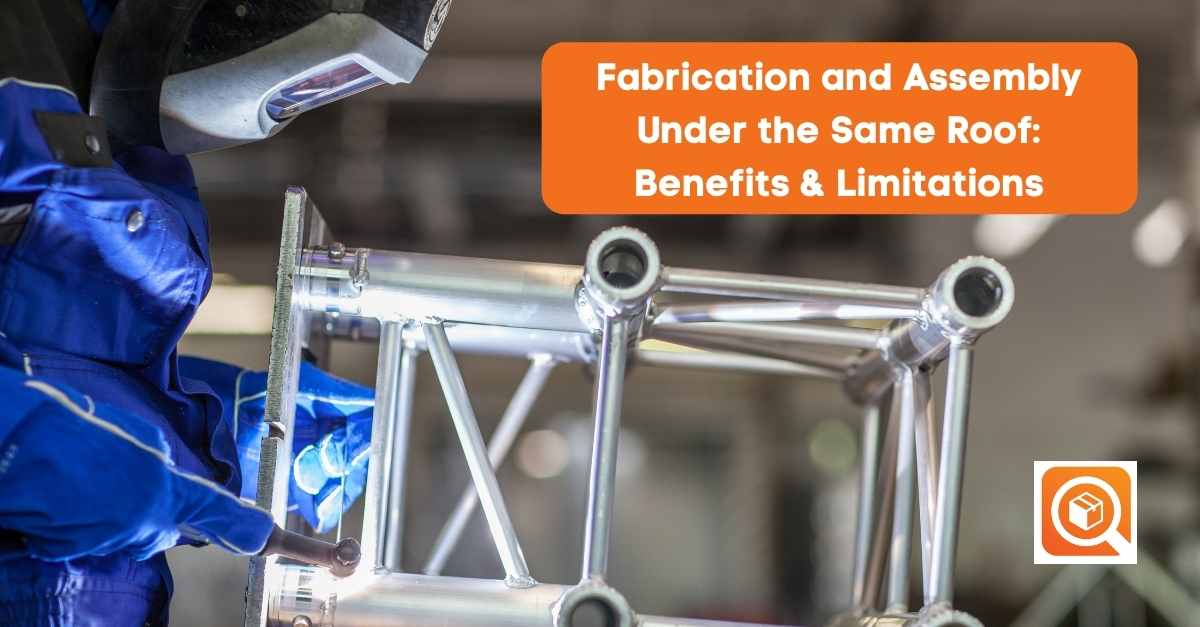Every week, several importing companies that are looking for a supplier reach out to us for help. In the past month, 3 or 4 of them were looking for a manufacturer for their new electronic product, and they had a specific request. They were looking for a factory in which both fabrication and assembly take place. What are the benefits and limitations of this..?
In practical terms, it means these production processes take place under the same roof:
- PCBA (SMT, reflow oven, optical inspections, etc.)
- [In some cases] Plastic injection tooling fabrication
- [In some cases] Plastic injection molding of the enclosure and/or custom internal parts
- Final assembly & testing
- Packaging
It does come with benefits. However, it is not always the most suitable arrangement.
Benefits of keeping fabrication and assembly in the same facility
I covered this topic in 3 Vertical Integration Benefits: Transparency, Control, Speed.
To summarize it:
- Transparency – avoiding multiple tiers of suppliers makes it easier to know what is really going on, as long as the final manufacturer (which handles all those processes) cooperates well.
- Control – it is easier to control 1 manufacturer than [1 supplier + 2 sub-suppliers].
- Speed – if many processes are under the same roof, the handover from one activity to its downstream activity is typically faster.
The best example is probably automotive plants. They can go from steel coils (stamped to make body parts) to a finished vehicle in about 24 hours.
This slide from the presentation of a Toyota old-timer illustrates this well.

Some additional benefits of using just one supplier for fabrication and assembly are:
- A reduced chance of IP leakage (especially when it comes to the PCBA process) as fewer parties need the information – this is generally extremely important for hardware startups with a new product idea
- Better control over the product’s molds, as it is easier to make sure that they aren’t used for unauthorized productions
When does such vertical integration work best?
It works great when the factory always makes the same type of product.
In the case of an automotive plant, they tend to be relatively focused. I don’t remember hearing of 1 plant making both compact cars and SUVs, for example. Forget about trucks or forklifts – each of those is made in its own specific plant.
Another example comes to my mind: a wheelchair factory. They can cut, paint, and drill their steel parts, they can cut and sew the textile parts, they can inject rubber, and so on, all in the same facility.
(Note: the true lean organizations make sure the processes are linked through kanban and the amount of work is levelled, otherwise the bullwhip effect is in full force and it creates many inefficiencies.)
Does it make sense for a manufacturer that will have to make a new product for a startup?
Seldom, for a simple reason.
The list of manufacturers that have many processes in-house is relatively short. It tends to be big companies, who generally do not care about a startup’s small orders.
If you place POs under 100,000 USD, those big companies may not even respond… Or they might assign a third-rate salesperson to follow up on your project and see you as their last priority.
Now, there are exceptions, of course.
If you find an ODM supplier that has a product that is already 80% or 90% of what you need, it may make very good sense to work with them. And they might have many processes in-house (that makes sense if they tend to make only 1 type of product and they have optimized their organization accordingly).
However, make sure you are aware of the typical pitfalls of working with an ODM supplier.
And, if you are worried about your China manufacturer, or one of their suppliers, copying your product, it is a very wide topic and you need to have a firm understanding of your risks. You should start by reading our guide to IP protection.


Hi Renaud, Nice post! I have seen the bullwhip effect first hand when I worked for a company 10 years ago. It lead to myself and another 100 people being made redundant. Inventory went from averaging $2M to $20M! Needless to say the $20M in inventory took a long time to sell through. I didn’t know the effect had a name until reading your post.
Another benefit for fabrication and assembly under one roof is for the environment. When goods are transported from one factory to another they are often packed into soft plastics that are difficult to recycle. A lot of companies (including mine) are trying to remove soft plastic from their products to reduce waste. This will likely become a hotter topic in the future. Right now consumers are making preference based on how much soft plastic a product comes with. The next phase might be how much soft plastic a product uses in production (i.e. when consumers became aware of poor labour practices by Nike etc). Something to consider anyway.
Hi Brenton, thanks for the comment!
Yes, the bullwhip effect can be devastating. It jerks demand up sharply and then there is no demand for a while. It builds up inventory and sucks working capital. Important to keep an eye out for it.
And you are right, minimizing transportation of parts means less packing and less energy consumption. Some smart factories have set up re-usable containers that they send back to their suppliers. Smart factories also use the right type of (reusable) dunnage to do the “unpacking” much less labor intensive. All that leads to cost savings.
And we have seen more and more customers drop plastic in their packaging and get positive feedback from the market. But in some cases they find it really hard to go away from see-through plastic packaging.